Everyday Life of the Sherpa People
The Sherpa Language
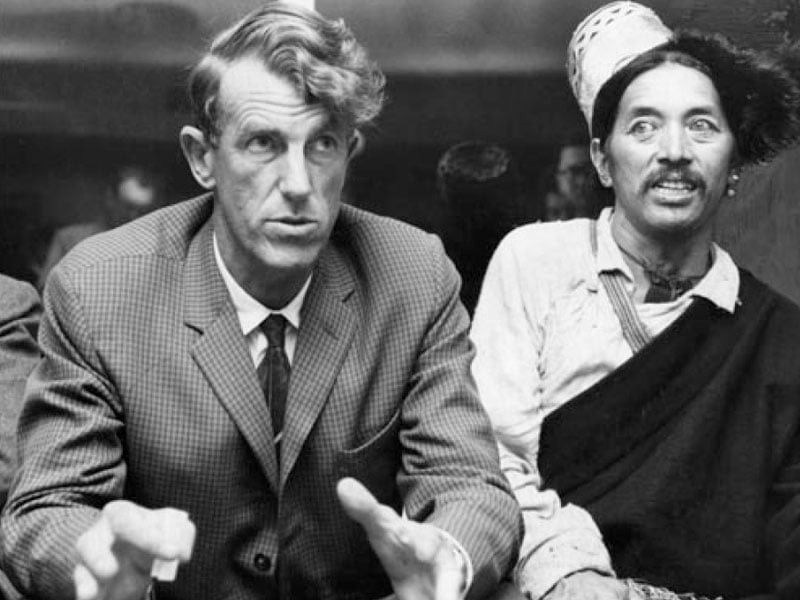
The Sherpa language originated from the old Tibetan religious books. There are many different dialects used in Tibet. As well, words from other languages such as Newar, Nepali, Tamang, And English have gradually come into our speech. The Tibetan language from Lhasa also changed since that time.
Occupations
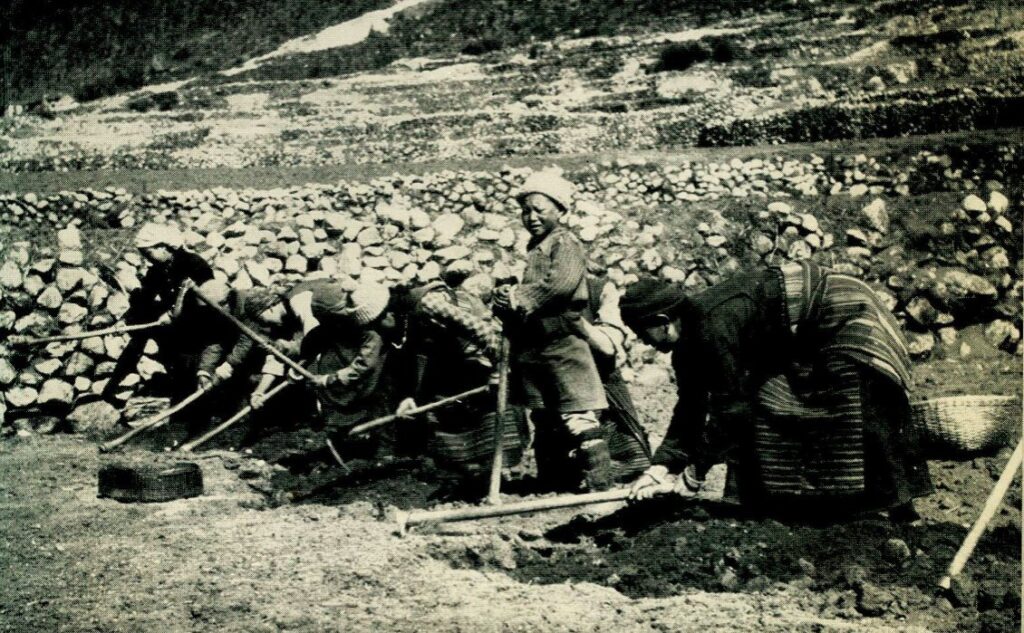
Before 1959, most Sherpas farmed and traded with Tibet. The business with Tibet was usually for salt and wool. Today, most people work mountaineering, trekking, portering , or doing religious services. The old people spend some of their time saying whatever prayers they know, going around stone mani walls and village Lha-khangs(Prayer Room) , and helping with their families.
Sherpa Food
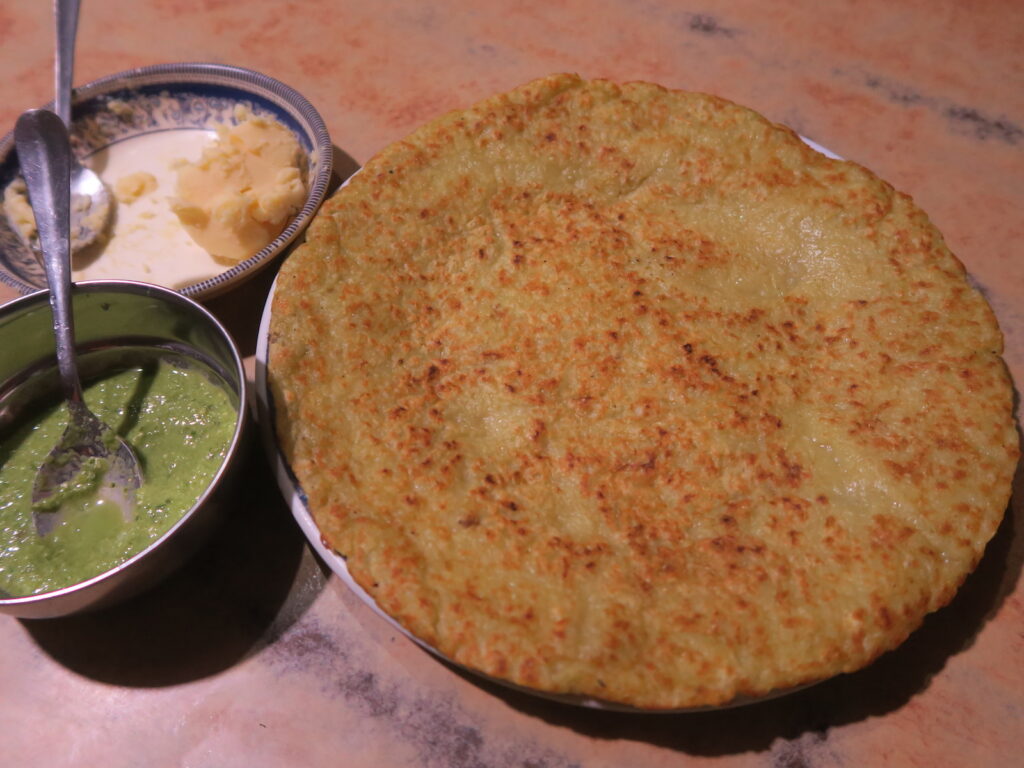
Potatoes, buckwheat, and barley are traditionally the main foods in Khumbu. Except for items brought up by traders, Sherpa food is limited to crops that can grow at the cold, high altitudes of Khumbu.
Sherpas eat some foods ,such as Tsampa (roasted barley flour), Potato Pancake (riki kur) , Stew (Shyakpa), Didho / Sen, and some Nepali food such as rice (dal bhat).Unique to the Sherpas are green vegetables that are cooked then fermented to keep, and kyu, a sour of salty porridge of many grains like corn,rice, millet.
The Sherpas grow potatoes, buckwheat, barley, turnips, and greens. Dairy products include butter, yougurt, and cheese. They purchase rice, lentils, corn, millet, and fresh meat from down-valley traders at the market. Salt and dried sheep meat is obtained from traders coming from Tibet.
Sherpa Houses
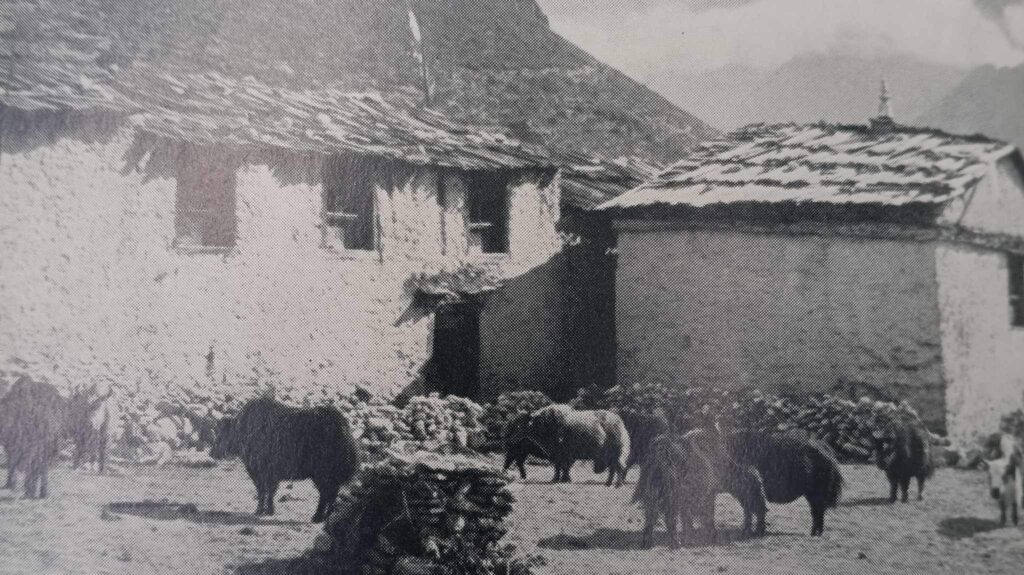
When the Sherpas first came to Solukhumbu, our houses may have been bambo huts. Gradually they changed to being half stone, half split wooden logs. Eventually they became stone houses, and later with two floors. At present, there are even some three or four story hotels and houses. Windows have been the fastest changing part of Sherpa houses with the introduction of glass panes.
The design of the Lha- Khang was brought from Tibet. In every home it serves a reminder of spiritual matters.
Usually the houses had simple windows with an opening in a wooden frame that closed by a small door. The wooden lattice windows became popular in khumbu when a Tibetan carpenter re-building Tengboche monastery after the earthquake in 1934 used this design of window. Sherpas copied this design , especially in their household Lha-khang windows.
Sherpa Dress and Appearance
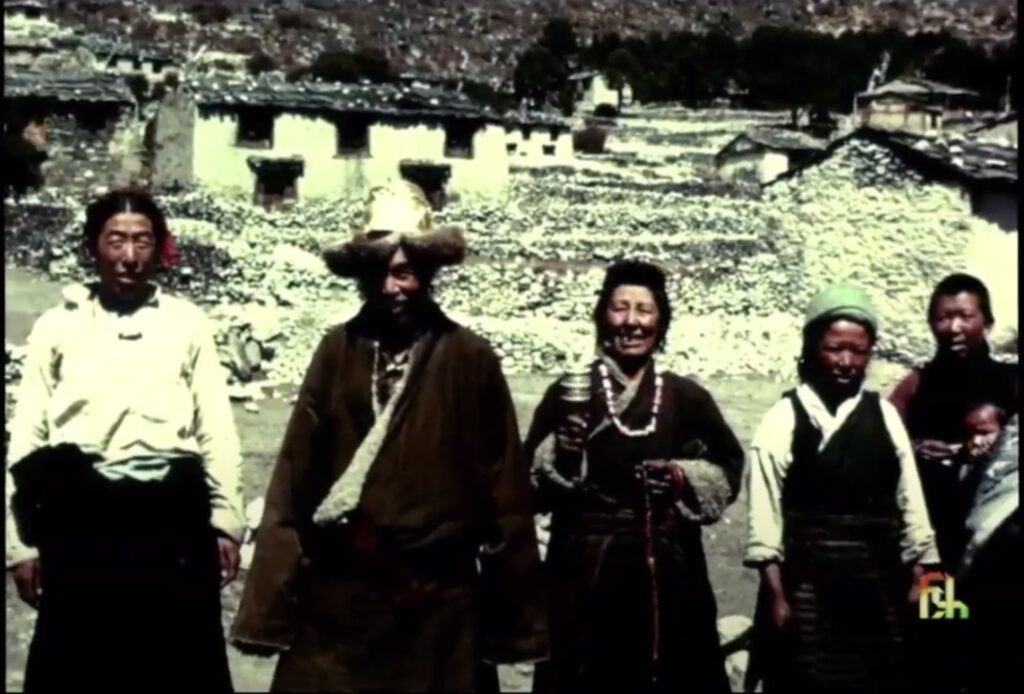
Traditional Sherpa clothing is similar to that of Tibetans. Most of their hats were distinctive to Solu-Khumbu.
The basic garment of the Sherpas, the chuba, originated in the cold climate of Tibet. It is a warm ankle-length robe that is bound around the waist by a long sash. The chhuba’s upper portion becomes a large pocket for everything from money to bowls. Unrolled, the sleeves extend beyond the fingertips.
In the past, chhubas were made from strips of hand-woven woolen cloth. Originally they were the undyed white color of the sheep’s wool from Tibet. Later we started dying the wool black or brown. On trading trips to Tibet, people often wore sheep skin chhubas, jackets or pants.
Men pull their chhubas up to knee length and often pull their arm from the right sleeve. Under the chhuba they wear a jacket or shirt with a stiff high collar, a tetung.
Women wear a sleeveless chhuba called an engi, or a sleeved one called tongok. Over it they wear striped woolen aprons on their front and back which in the old days were the same length as their engi. The corners of front aprons (metil worn on festive occasions are often decorated with brocade patches.
Over festive clothes, women will wear a long coat (engi tangzan with panels of wool and brocade. A newer style of festive hat is the tsering kinghap; a high-crowned brocade hat with four fur-lined flaps worn by both men and women.
In the old times, both men and women wore long hair braided and would around their head. Older men often wore a long sash wound around their head called a tho. This kind of headgear is worn by the god Khumbila. The se-sha is a flat hat worn by men on festive occasions.
The women wore a small diamond shaped hat on the top of their head called a mo-sha. The wa-sha is a warm, cloth and fur hat worn by traders and yak herders.
Traditional boots are made from wool cloth. They may have leather soles (kosail or wool cord soles (shangsil. Lham are very old style all leather boots worn by men only.
Over the decades, the dress has changed. Men usually just wear trousers and shirts but still wear their chubas on special occasions like visiting lamas, weddings, pujas, and festivals. Women’s clothing is still traditional, except the aprons are shorter and hairstyles have changed. Now, men, children and teenage girls wear clothing that is more western style.
Sherpa Jewelries
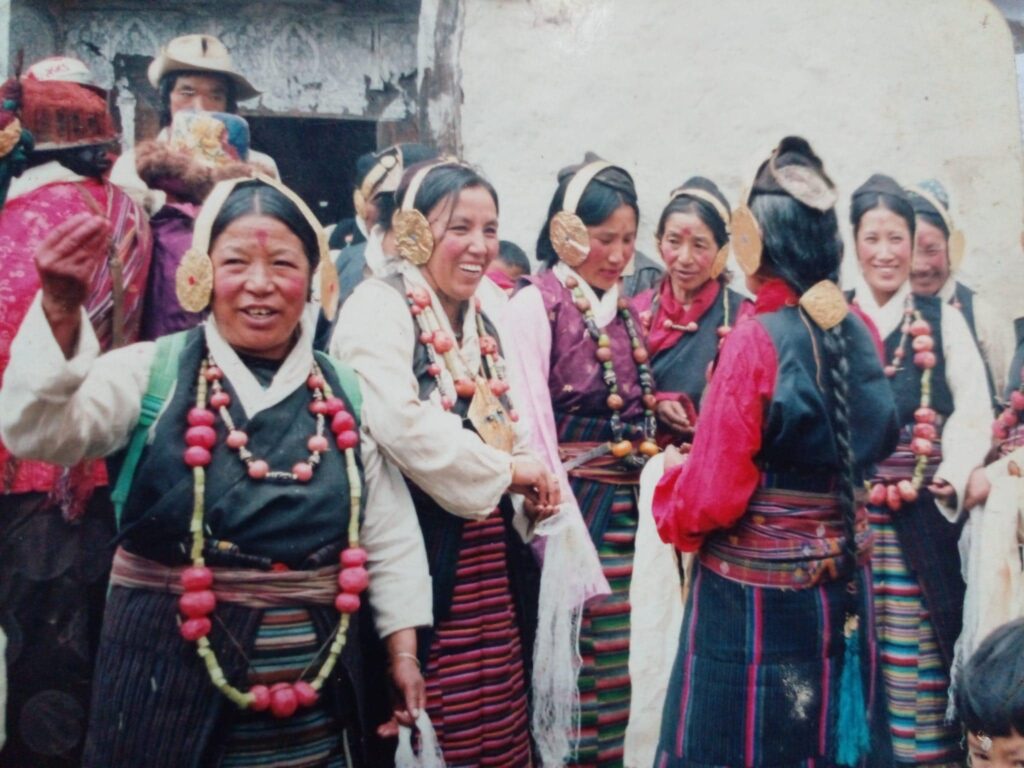
Sherpas purchase jewelry as an investment and often select it for its auspicious properties. Sherpas accumulate their wealth by purchasing these stones which they wear as necklaces or set in gold or silver jewelry.
The three main stones used in Sherpa jewelry are coral, turquoise and zi. Coral (churu) probably came to Tibet from the Mediterranean via the silk trade.
Turquoise (yu) is found in Tibet or imported from Persia. Wearing this stone brings good luck and is especially good for one’s health. If worn while ill, turquoise often becomes darker, thus it is believed to absorb toxins from one’s body.
The black and white zi stone is very precious. The more eyes a stone has, the more expensive and auspicious it is. It may be a kind of agate, or a kind of bead, but science has yet to fully explain the zi.
Unique Sherpa jewelry is the “flowers of gold” (serki mendok), worn over a woman’s ears, and the necklace of gold plates (serki tiktik). Women wear these only at festivals and now they are rarely seen.
In the old days, both men and women wore simple earrings of turquoise and coral on a string through their earlobe. They also wore large gold or silver hoop earrings set with a turquoise.
The Khau, also called serki klaabo, is a box, often of gold or silver, which holds prints and sacred objects. They are often decorated with precious stones and worn by women on a necklace of zi and coral.
A dablang is a shrine-shaped box for protective prints, relics and religious medicine that people wear on a cord and tuck in one’s clothing.
A chapchap is a very old style pendant that attaches to the shoulder of a woman’s robe. At the ends of its strands are small tools and toilet articles.
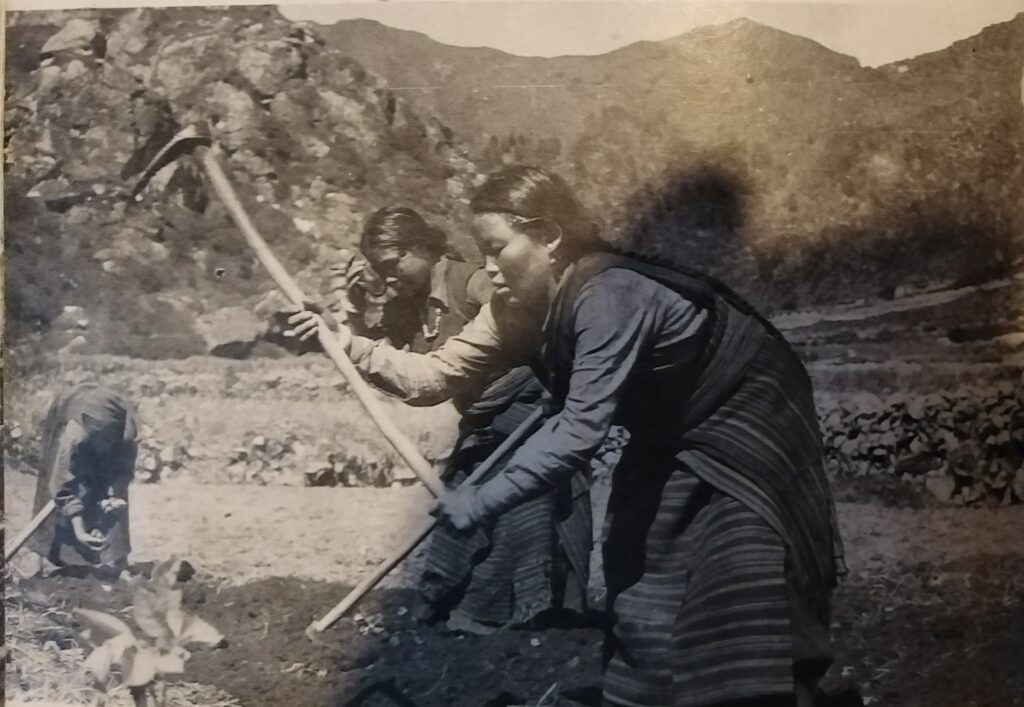
Some content on this page is adapted from the book Story and Customs of the Sherpas by Frances Klatzel, based on the stories told by Tengboche Rinpoche, Ngawang Tenzin Zangbu. All rights belong to the original authors.
